KØOV's Photo Album
of the 2011 USA and IARU-R2 ARDF Championships
Page 1 of 5

The training camp sessions on Wednesday and Thursday started and ended at Oak Flat picnic area, 17 miles southeast of Albuquerque. It had been the site of the two-meter championship competition in 2005.
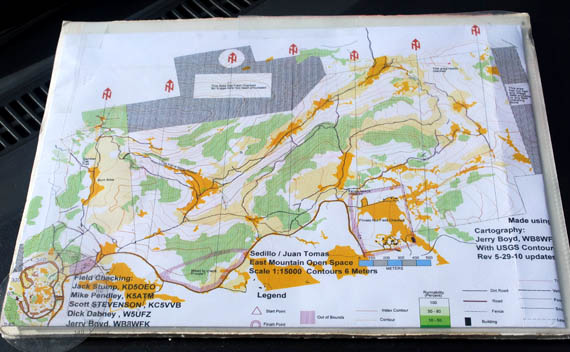
Members of New Mexico Orienteers have kept the map up to date with frequent field checking.
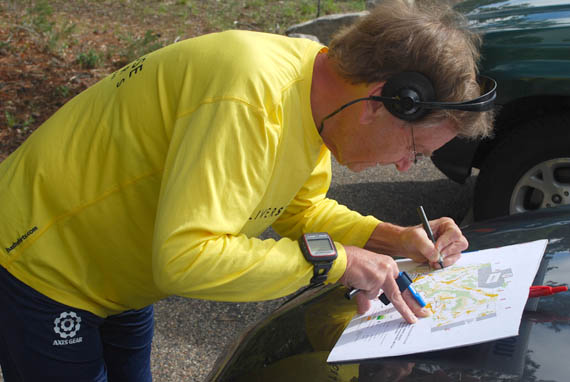
The trails on the Oak Flat map were hard to see, so Jay Hennigan WB6RDV traced them in darker ink. Jay is an experienced radio-orienteer and marathoner from California who has been to the World Championships several times, but he never misses an opportunity to train.
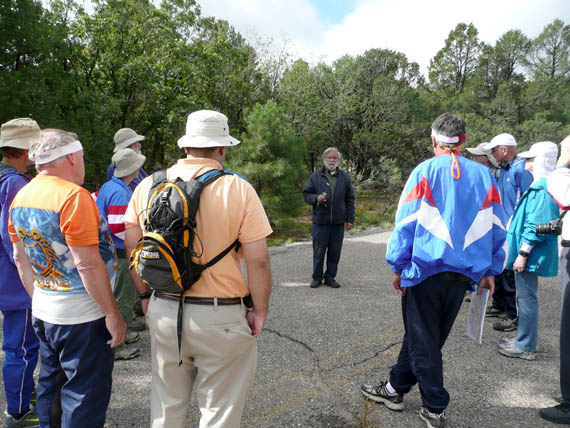
Marvin Johnston KE6HTS (facing camera) helped organize and lead the training sessions.
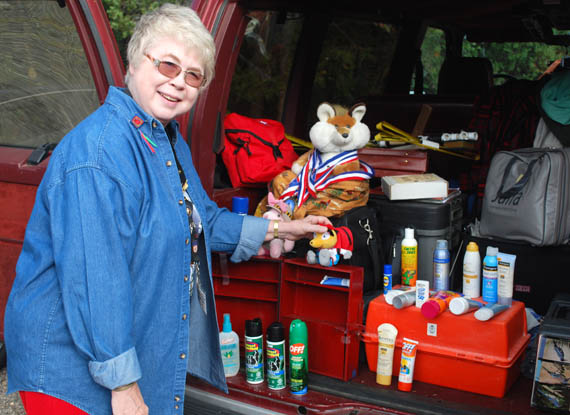
Field Medic April Moell WA6OPS was ready with sunscreen, bug spray and lots of First Aid supplies.
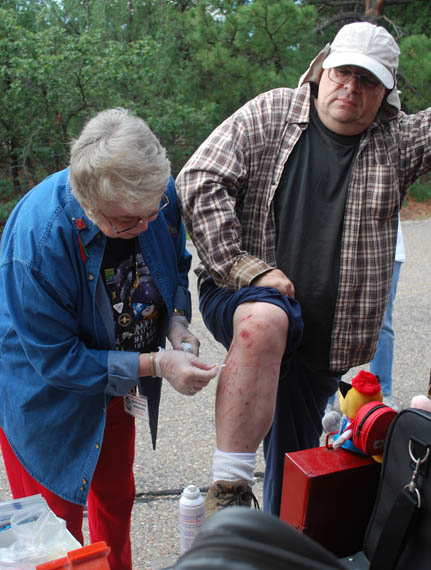
April cleaned up some scrapes and scratches that Bill Smathers KG6HXX got on Wednesday.
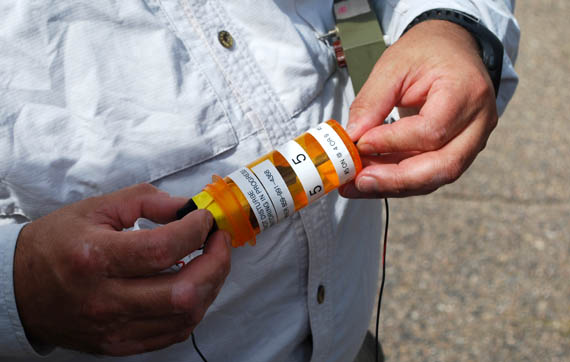
Little microtransmitters like this with hanging wire antennas were used for the 80-meter training session.
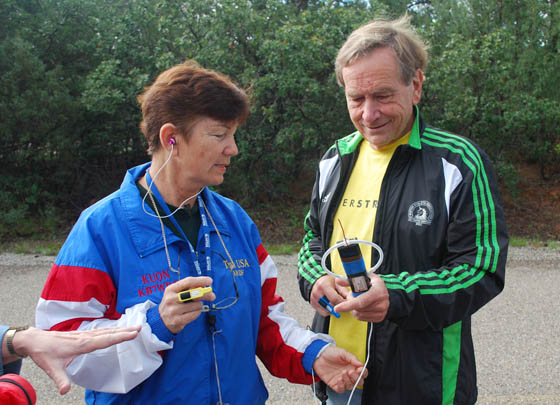
Kuon Hunt KB7WRG shows her new 80m ARDF set to Jay Hennigan WB6RDV.
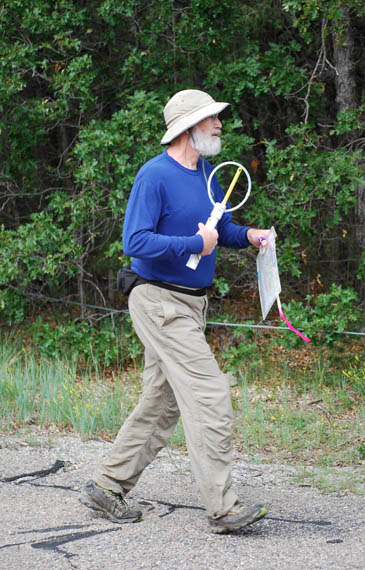
The 80m receiver of Dale Hunt WB6BYU is built into a PVC pipe.
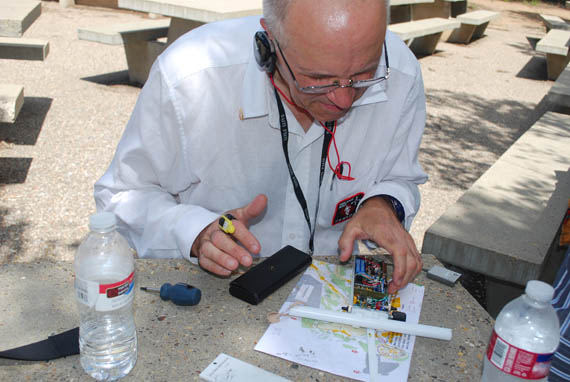
Keith Witney VE7MID of Burnaby, British Columbia needed to make emergency repairs on his 80m receiver.

Many competitors mounted their maps and covered them with plastic. That kept them flat and made marking bearings easy. Discarded political campaign signs are ideal for this. Harley Leach KI7XF thought that one for candidate Fox was especially appropriate.

On Thursday, Marvin Johnston KE6HTS whipped up a complete tri-tip beef barbecue meal for all of the trainees.

Dale Hunt WB6BYU (right) discussed the course he just finished with Jerry Boyd WB8WFK as they waited for the tri-tips to come off the grill. As Co-chair of the organizers, Jerry had many duties including course-setter for both the training sessions and the competitive venues. He also did lots of mapping and field checking.
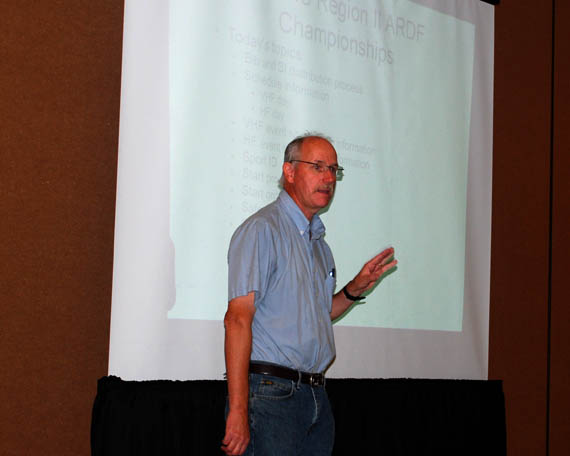
Registration for the competition began early on Friday at the event hotel in Albuquerque. That morning, Jerry Boyd WB8WFK gave a Powerpoint presentation about the rules and logistics. He also covered the dangers of New Mexico woods, such as bears, cougars and poisonous snakes.
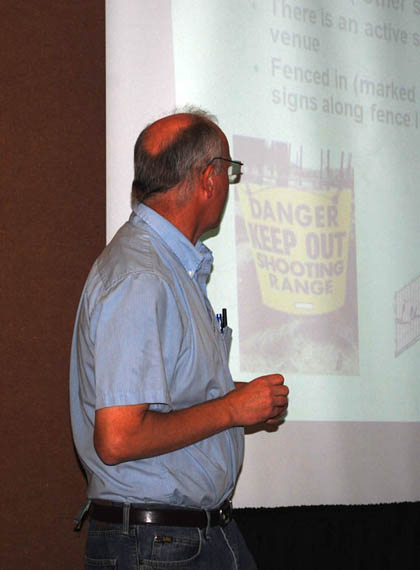
Another potential danger was an active shooting range within the area of the two-meter map. Fortunately, it is well fenced with plenty of signs.
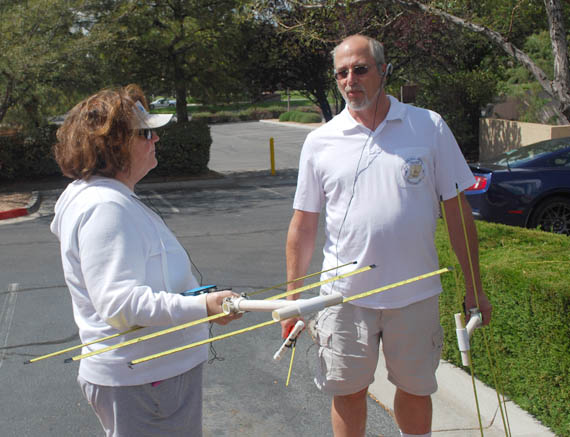
After the presentation, it was time to test equipment with the practice 80m and 2m transmitters just outside the hotel. Marji Garrett KJ4ZKC and Brian DeYoung K4BRI came from Alexandria, KY.
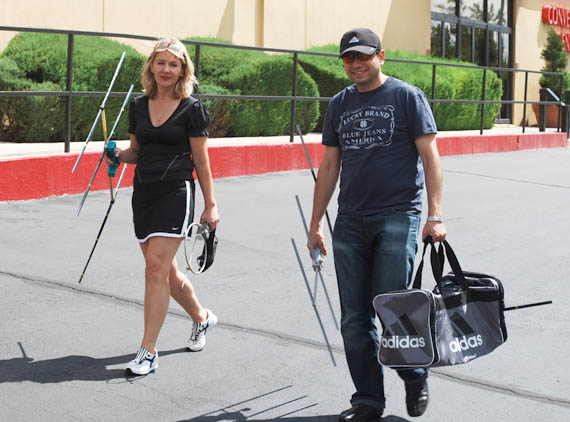
Alla Mezhevaya and Nicolai Mejevoi came from Rockford, Illinois. Each of them learned ARDF over 20 years ago in the Soviet Union.
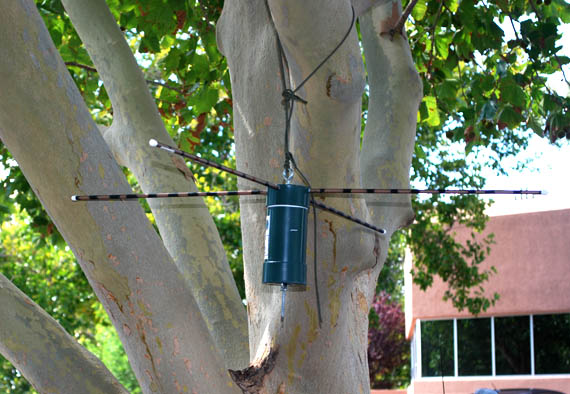
AARC used these rugged lightweight two-meter AM keyed-carrier transmitters that are built into PVC pipe sections. The omnidirectional horizontally-polarized "turnstile" antenna consists of four 19-inch removable rods that protrude from the pipe near the top.

Here is one of the 80-meter fox transmitters in a waterproof ammunition box. The antenna is a vertical wire with an impedance-matching network at the base. The transmitter operator throws the weighted rope up into a tree, then hauls up the antenna wire.

